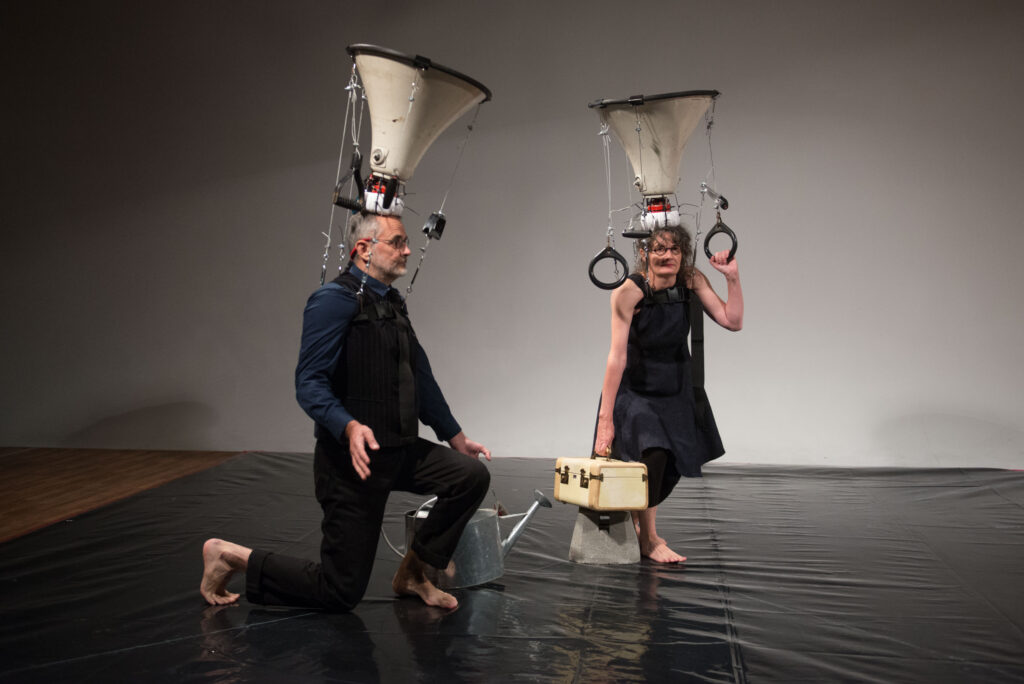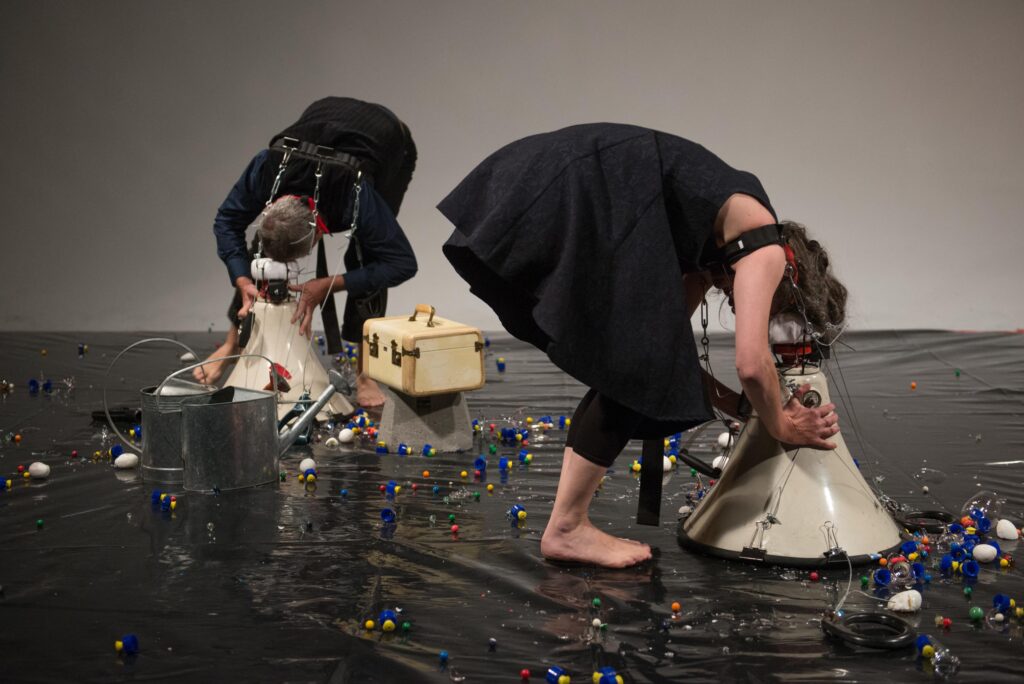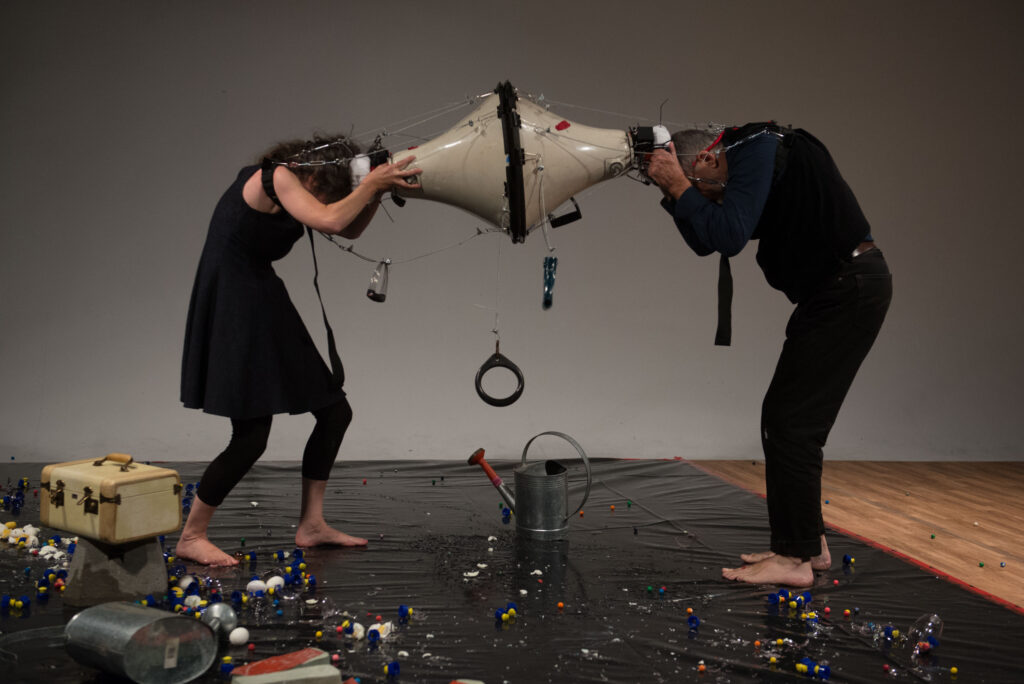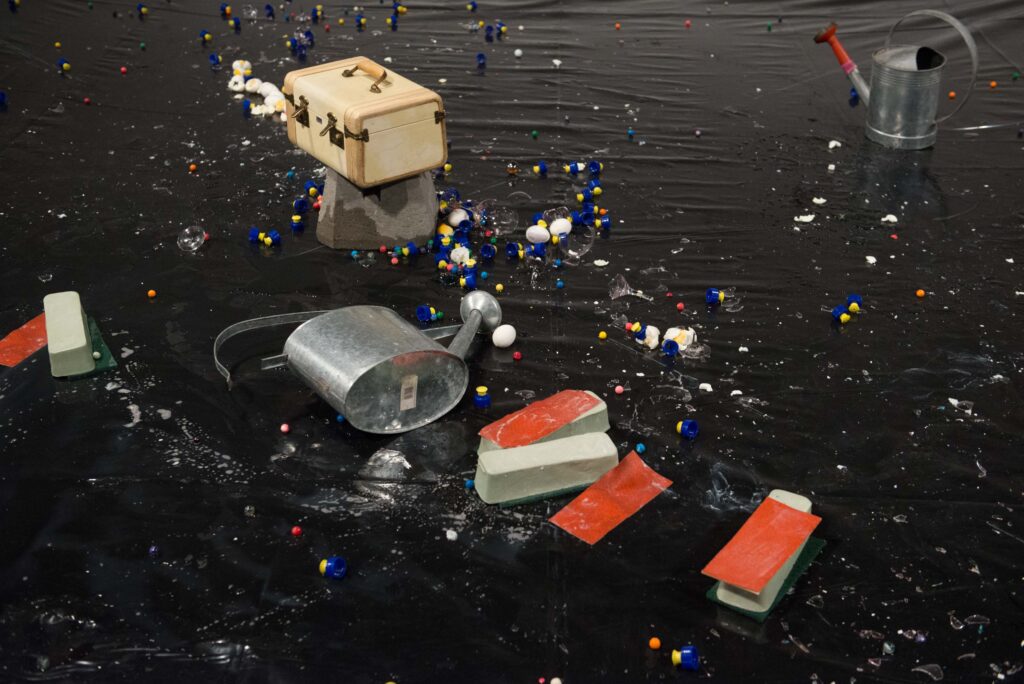Après Niagara Falls
By Michelle Lacombe

The first time I saw Doyon/Demers perform was only a few years ago. I was enthralled by their playful use of technology, their physically imposed loss of control, and their shared accountability in the work. Simultaneously absurd, corporeal and intimate, I find their performances to be like a romantic, messy and unpretentious relative to early Stelarc works. But more narrative. So not really like Stelarc, but definitely also representative of an approach to performance art that whimsically puts the body in dialogue with moderate risk and common technology.
When they walk out, Doyon/Demers are barefoot and each have a large metal megaphone structure projecting recorded soundscapes affixed to their heads. The heavy cones balance precariously, held in place by metal wires, carefully gripped handles, chest straps and neck braces. The look is a smart casual take on low-tech sci-fi, somewhere between a mad high school science teacher and a classy one-man band. The immediate absurdity of the scene is complicated by their intense focus on remaining upright. Their bodies quiver, careful not to unbalance their imposing headgear as they enter the space and step onto a thick black plastic sheet that covers the ground. Moving close to the center, they set down two metal watering cans and a small travel case. The gestures are slow and laborious.
They follow each other in uneven laps. It’s tense to watch but pleasant, like that time I found a live stream of a slippery patch of ice on a busy street. (When will they fall?…) Rather quickly, one of the structures tips, and the second echoes almost immediately. As their bodies bend, an abundance of small objects spill out. Bright plastic nozzles, colorful marbles, broken wine glasses and hard-boiled eggs litter the ground like confetti. They use their headpieces to carve a path in the colorful clutter. The stakes have just been raised.
After some slight readjustment, they are upright again and the soundscape shifts to the calls of Canadian geese. Too focused on the movement, this is the first and only sound I actively register. Probably because I find it to be a hilarious complement to them moving across the space to kick the shelled orbs, their attention shifting suddenly between balancing the sonic headgear and avoiding the countless treacherous objects strewn about the floor. Audience members gasp when their bare feet, seeking out soft shells, step on hard plastic and sharp glass. They stop roaming and the sound changes. Four thick bars of soap are arduously removed from the travel case and sandwiched between two scrubbing pads. The watering cans are retrieved and, as they wet a section of the tarp, one of the handles snaps. Things begin to feel increasingly out of control. Nevertheless, they attempt to stand on the their make-shift low-rise stilts. The stakes are raised again.
When they do get atop them, it is not for long. We watch them struggle to get in position and attempt to glide across the wet tarp. Despite the help they offer each other, neither gets very far. The tension in the room is palpable. Their increasing effort and the persistent menace of stepping on the painful detritus overshadows the absurdity and humour of the scene. A member of the audience gets up to remove a large piece of glass from their surroundings but it only highlights the countless other pieces scattered in the mess. I am simultaneously absorbed and unnerved.
Eventually the soundscape changes and, clearly drained, they move into their closing arrangement. Facing each other, they bow so that their amplifying cones meet and project their final sounds into each other. The courtship display has come to a close. We exhale and revel in the thrill.




